The last dish Zachary Huber garnished and sent out of the kitchen at Sqirl was a sorrel pesto bowl. It was March 15, 2020, the day Mayor Eric Garcetti first ordered restaurants to stop dine-in service and Angelenos to hunker down at home to prevent the spread of COVID-19.
Huber sprinkled dill and Maldon sea salt over a bowl of brown rice, sorrel pesto, preserved lemons, and feta cheese. The dish has received acclaim from national food writers and L.A. food lovers, who for the last eight years have flocked to the corner of Virgil Avenue and Marathon Street in Virgil Village. Most weekends, pre-pandemic, the brunch line snaked around the corner.
Huber had worked at Sqirl for nearly two years, first as a food runner and then as a cook. By phone, the 31-year-old told us the job was exciting — at first. He enjoyed the fast pace, welcoming environment, and knew a stint at the hip eatery would bolster his career in the hospitality industry. But Huber says the restaurant’s until-recently pristine reputation as a bastion of seasonal California cuisine and progressive values didn’t match with the reality behind kitchen doors.
Of course, that former reputation has been fractured now, owing to the recent social media storm known as #moldgate, which transpired after some of the restaurant’s alleged transgressions — including selling moldy jam — were brought to light on Instagram, inspiring an outpouring of news articles. (At least one local outlet that jumped to cover the story last week, we learned, previously declined to pursue it when Sqirl employees came to them with concerns, raising questions about the media’s role in enabling the Sqirl fiasco.)
We began reporting this story in late April, long before self-described “food antagonist” Joe Rosenthal began sharing Sqirl employees’ photos of moldy jam on Instagram, kickstarting one of the biggest food controversies in recent memory.
Over the past two-and-a-half months, we interviewed 21 former and current Sqirl employees — 10 on the record — the vast majority of whom shared similar stories of unsafe working conditions, unsanitary food-handling practices (including scraping mold off buckets of jam), and food being prepared in a kitchen that was unpermitted for years. But to some who worked at Sqirl, the problems go much deeper than mold and point to an industry that systematically rewards and enables star chefs while asking few critical questions about the workers who often power their success. Four such workers we spoke to allege Sqirl owner Jessica Koslow took credit for recipes developed by her employees, such as the famed ricotta toast. They say she unfairly accepted and capitalized on the title of “chef” while she rarely cooked anything herself.
Former and current Sqirl employees provided consistent accounts of a boss they felt didn’t care about the safety of her employees and showed little concern about her restaurant’s impact on the Virgil Village neighborhood. Koslow, they told us, prioritized her business’s image and bottom line above all else. (A Sqirl spokesperson denies these allegations.)
In a statement posted to Twitter on July 12, Koslow admitted that mold had sometimes developed on containers of Sqirl jam and that employees had removed the mold “and several inches below the mold.” She wrote: “In deference to the concerns about jam and mold specifically, we’re doing even more to better store our bulk jams.”
In a statement responding to multiple allegations, Koslow said: “In regards to my management of Sqirl, there is no doubt that it took us too long to put the systems in place to effectively manage the operations of a restaurant and effectively manage a team—particularly in how to best support our staff and make sure they can grow. That is on me. Those systems are in place, and have been, and I have prioritized continuing to improve that part of the business.”
She went on to acknowledge and apologize for allegations about the working conditions in Sqirl’s secondary kitchen, which documents show was hidden from the L.A. County Department of Public Health.
Like a lot of popular restaurants that have become synonymous with issues of gentrification, Sqirl inspired complicated feelings from those who prepared its food. Many of the same employees who allege unsafe working conditions also described the restaurant as a place where creativity flourished. To them, the casual environment was preferable to the aggressive management style at most corporate chains or fine dining establishments. Plus, the minimum wage pay amounted to significantly more than that after tips, and Sqirl chipped in to co-pay for healthcare premiums, a benefit that’s rare among restaurant workers. Even still, some former employees say they experienced more nuanced problems — a consistent trickle of small offenses that created a culture in sharp contrast with Sqirl’s reputation and image as a progressive place to work.
Many of these small offenses bubbled to the surface after the blow of a global health pandemic and its economic fallout followed by a massive uprising against racism and police violence, which caused some former Sqirl employees to question how the business operated, in comparison to how it presented itself publicly. For some employees, the final straw came in March, when Koslow declined to support a staff-led GoFundMe designed to help Sqirl employees during the coronavirus pandemic.
Tensions in the community persist and Sqirl continues to suffer professional fallout from the scandal. But current and former employees believe the issues raised by Sqirl are bigger than Sqirl itself; To many restaurant workers, it is a microcosm of the issues plaguing the wider restaurant industry, from precarious employment and unsafe working conditions to the erasure of workers’ creative contributions. These issues have gained wider traction over the last several weeks as back-to-back scandals have rocked the food world: Cookbook author and Instagram star Alison Roman, whose recipes riff on Asian ingredients without acknowledging their origin, came under fire for an interview in which she slammed the achievements of Asian women; and Bon Appetit’s then-editor-in-chief Adam Rapoport stepped down after a photo of him in Brownface led to accusations of severe pay inequity on his staff.
Many current and former Sqirl employees hope the firestorm ignited by the now infamous restaurant on Virgil Avenue will similarly spark broader conversations about and efforts toward systemic change and accountability in the restaurant industry.
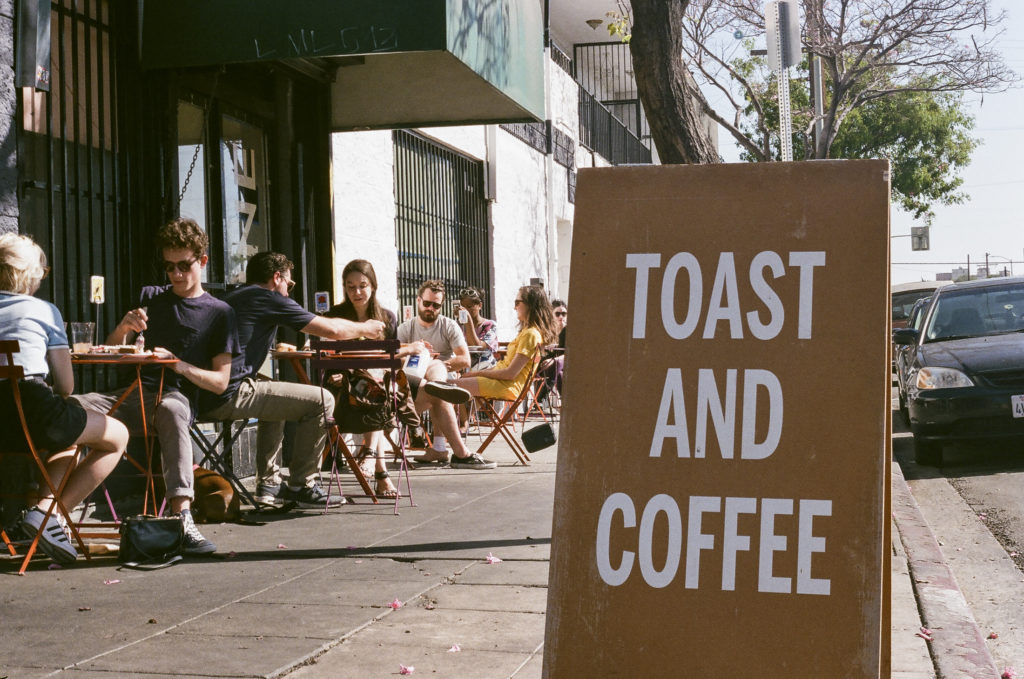
Before the rave reviews and national media attention, Sqirl started with jam. Koslow, a former television producer who learned about food preservation during a stint at Atlanta’s Bacchanalia, wanted to grow her fledgling jam operation. On Craigslist, she spotted an ad for a small storefront on Virgil Avenue, just north of Melrose. It was an awkwardly shaped, 800-square-foot unit that had previously housed a Mexican restaurant. There was a market across the street and a Salvadoran church a couple doors down. Koslow bought out the lease for $10,000.
“It had an ‘A’ on the sign and two cockroaches on it,” Koslow told chef David Chang on his podcast, The Dave Chang Show, in February 2019. “It wasn’t in the best of shape, but it was so low risk, it was $2,000 a month.”
Her plan was to make and sell seasonal jams, maybe teach a few classes.
Sqirl opened in November 2011, when Koslow was 31 years old. After hosting a series of toast and coffee pop-ups in the space, Koslow launched Sqirl as a breakfast and lunch restaurant in October 2012. The attention came fast.
In reviews and on social media posts, people raved over the seasonal grain bowls and brioche toast layered with kale, tomatillo puree, and lacto-fermented hot sauce. Sqirl was featured in Bon Appétit and received a glowing review from the late Jonathan Gold in the Los Angeles Times. Even the New York Times, which is notorious among Angelenos for belittling L.A.’s food and culture, eventually took notice, proclaiming Sqirl’s breakfasts “downright revolutionary.”
From its humble origins, Sqirl eventually grew into an enterprise that Koslow told the New York Times in a 2019 interview was making “$7,000 on a slow day.”
The Sqirl brand also includes a catering arm, cookbooks, jarred jams, and media appearances by Koslow herself. On Chang’s podcast, she said that Sqirl sells tens of thousands of jars of jam each year, which range from $14 to $18 each. During a typical busy weekend, she told Chang, between 1,200 and 1,500 people would pass through the restaurant, which only serves breakfast and lunch.
But in the restaurant world, looks can be deceiving. Margins are notoriously slim, even at some of the most prestigious establishments. Still, for a newcomer, Koslow was off to an enviable start.
Part of Sqirl’s appeal was that it attracted a mostly white clientele to a predominantly working class Latinx neighborhood they knew little about.
Publicly, Koslow regularly described the neighborhood as undesirable, referring to Sqirl’s location as “a street corner that no one wanted to be on” and “a street no one knew about, in a neighborhood no one cared about.” In a 2016 Eater profile, she called the spot a “shitty corner on Virgil and Marathon.” And on Chang’s 2019 podcast episode, she referred to Virgil Village as being on the “buttcrack of Silver Lake.” Koslow then told Chang that Sqirl “became the community restaurant that the community was looking for.” That “community” was Silver Lake, not Virgil Village.
When asked about her comments in these interviews, Koslow responded via a Sqirl Spokesperson, who asked to be referred to as such, with the following statement: “It’s true that in 2016, I said some stupid and offensive things about the neighborhood and I am truly sorry for that. I knew right away how wrong what I said was; I regretted it immediately. Yes, Sqirl has perpetuated gentrification in Virgil Village; what conscious person could deny that? I did not set out to change Virgil Village, not by a longshot. The truth is that I first rented the Sqirl space because it was five minutes from my house and it was the only space I could afford. Then and now, I love Virgil Village and its community: it has been the most beautiful home for Sqirl and I am very grateful.”
Virgil Avenue, the neighborhood’s main corridor, is mostly occupied by mom-and-pop shops catering to the needs of residents: laundromats, Pentecostal churches, small markets, a barbershop, and a Salvadoran restaurant where Central American immigrants often gather.
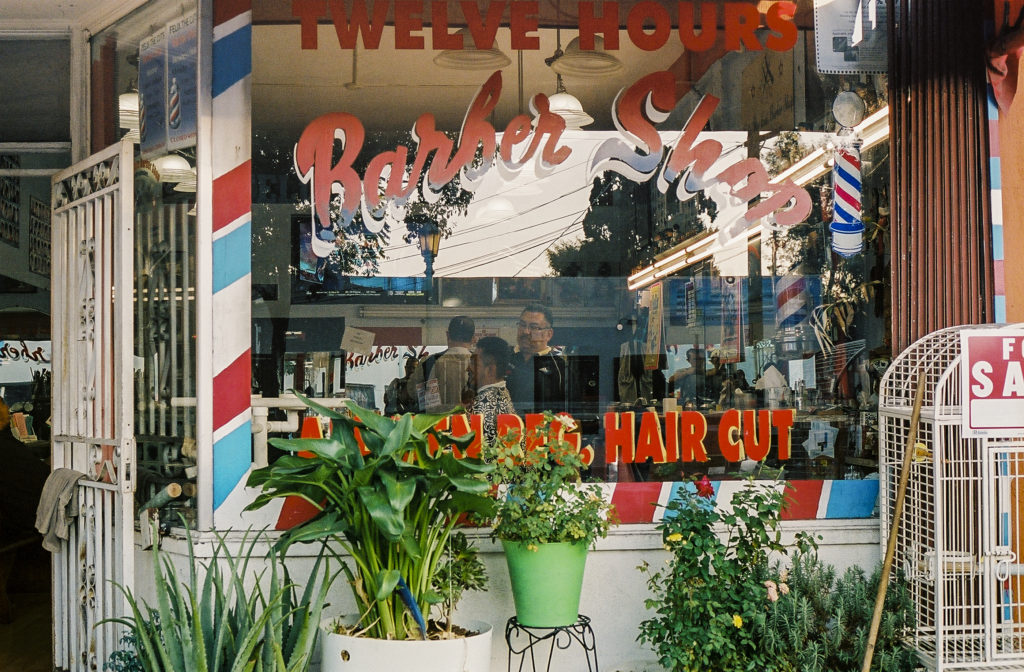
By 2016, the neighborhood had begun to look a lot different than it did when Koslow opened Sqirl four years earlier. Many longtime businesses and residents had been displaced by rising rents and replaced by a wealthier, whiter demographic and new businesses that served them.
Meanwhile, Sqirl soared in popularity, maintaining its original 800-square-foot space while expanding into three adjacent units. Those spaces were once occupied by a liquor store and a Salvadoran church.
READ MORE: Las Mujeres de Virgil Village
Samanta Helou-Hernandez, one of the authors of this piece, has been documenting the changes in this neighborhood for two-and-a-half years through her Instagram account This Side of Hoover. (Through this account and on her own personal Twitter account, she has been critical of the effects of systemic gentrification and displacement, including in Virgil Village, where Sqirl has undoubtedly played a role.) When she posted a question about Sqirl on This Side of Hoover’s Instagram account in June, a number of longtime residents responded that they didn’t feel welcome at the restaurant, which they saw as a harbinger of gentrification.
“When Sqirl opened up, I saw so much change,” says Raquel Alegria, a Salvadoran American resident of Virgil Village for more than two decades. “It’s truly upsetting when overpriced restaurants open up in predominantly Black and Brown neighborhoods, because you displace the families that have lived in these communities for so many years.”
Crowds of hipsters paying $10 for avocado toast made Sqirl feel inaccessible — financially and culturally — for many neighborhood residents. As lines began to wind around the block, tensions grew.
“I would see a little abuelita walking down the street with their kids and a stroller and they couldn’t walk on the sidewalk because of the line and crowd,” says Jacqueline Vaca, a former barista and bar manager from East L.A. who worked at Sqirl for a total of two years on-and-off between 2014 to 2018. “It didn’t faze [Koslow] that this was a problem that she was causing.”
Multiple former employees also say that while Koslow was focused on building her brand, she did little to improve Sqirl’s relationship with the community.
“There’s an image that the restaurant is looking to cultivate and, over time, the image became very clearly not where the community was, but where it was going,” says Gabe Rios, Sqirl’s most recent sous chef. He worked there for more than four years before quitting in early July.
While Sqirl dished out sorrel pesto bowls, the neighborhood around it kept changing. Across the street from Sqirl, Guatemalan restaurant Amalia’s was replaced by a wine bar. Down the street, beloved Carribean restaurant Cha Cha Cha was demolished to make way for luxury condos. New apartment listings often boast about their proximity to Sqirl.
Alex Fonseca, Sqirl’s current floor manager, has been with the restaurant since 2017. He believes that Koslow gets unfairly labeled as a gentrifier because of Sqirl’s success. “It’s very easy to blame individuals for that [gentrification], it’s extremely reductive to do that,” he says. “Gentrification is a process that has been happening for generations.”
Tensions in the neighborhood are palpable, nonetheless. One morning in December 2017, Sqirl employees noticed a spray painted mural that appeared on the building across the street. It depicted a squirrel dressed like President Donald Trump kicking a Mexican flag next to a sign that read “affordable living.” Next to the squirrel, the words “we the people” had been crossed out and replaced by “white people.”
Employees scrambled to buy paint, then white-washed the mural before guests arrived for breakfast.
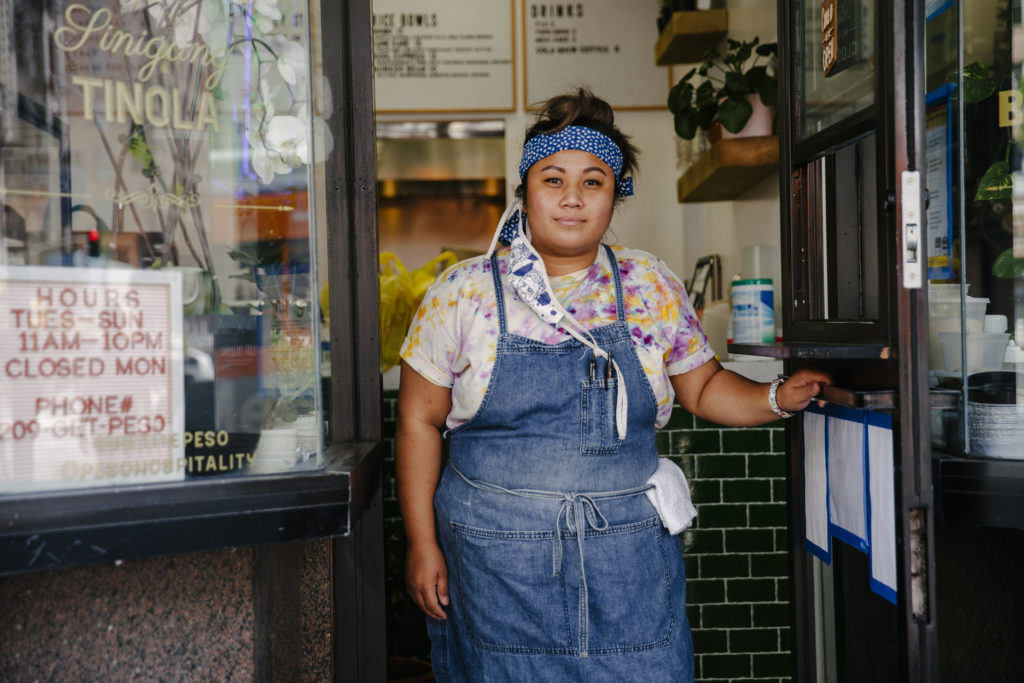
Despite the rave reviews and social media attention, the praise for Sqirl has always seemed to overlook a key ingredient to its success: Ria Dolly Barbosa, the restaurant’s first chef de cuisine.
Barbosa, now 37, grew up in pre-gentrified Atwater Village and inherited a passion for cooking from her Filipino parents. She had spent more than a decade shuffling through back-of-house positions at various restaurants across the Southwest. The prospect of working at Sqirl felt like a creative reprieve from the stuffy and often toxic world of fine dining.
Barbosa says her duties at the time included developing recipes, scheduling, hiring staff, taking inventory, and making orders — the role of an executive chef. She says that often meant working until 2 or 3 a.m., long after Koslow and most everyone else had gone home.
“In the beginning it was great,” Barbosa, who worked at Sqirl from 2012 to 2014, told us over the phone. “It was very collaborative. [Koslow] had all these ideas but didn’t know quite how to execute, given her little experience. And that’s where I came in.”
She says one day, Koslow expressed a desire for a dish with sorrel, preserved lemons, brown rice, and feta. Barbosa suggested they use a sorrel pesto instead of cutting up the leafy greens. “I said, ‘If we turn it into pesto, you get flavor throughout,'” Barbosa recalled. The result was the Sorrel Pesto Bowl, one of Sqirl’s best-known dishes.
But as Sqirl and its food earned more acclaim, Barbosa, who today is the chef and owner of Petite Peso, a downtown L.A. restaurant inspired by her Filipino upbringing, was rarely credited for her contributions.
“Sqirl was kind of like the first huge heartbreak because a lot of that was my intellectual property and things that I spent hours and days testing and trying,” Barbosa says.
In an emailed statement via a Sqirl spokesperson, Koslow wrote that she has consistently “attempted to acknowledge, both privately and publicly, individuals and their contributions to who and what are behind the reviews, loyal repeat customers and destination diners.” She also referred to “an existing structure in our industry for how restaurants retain the creative recipes and techniques that many chefs contribute to the place during their employment.”
She went on to say: “I am profoundly grateful for their creations and talent and love that go into Sqirl’s menu and I can apologize for and fix my own mistakes, but I am not in a position, standing alone, to apologize for a business structure that is foundational to the entire service industry and the majority of American businesses.”
The question of who “owns” a recipe is a thorny one and not unique to Sqirl. If a chef creates a signature dish while working at someone else’s restaurant, can they call it their own? Can they continue making it when they work in another kitchen? The U.S. government won’t issue copyrights for recipes, but what about more subtle issues of giving credit? What happens when a chef or restaurant owner receives culinary acclaim for dishes developed by their employees? In most cases, we hear all about that chef and nothing about the back-of-house staff. That’s the standard throughout the hospitality industry.
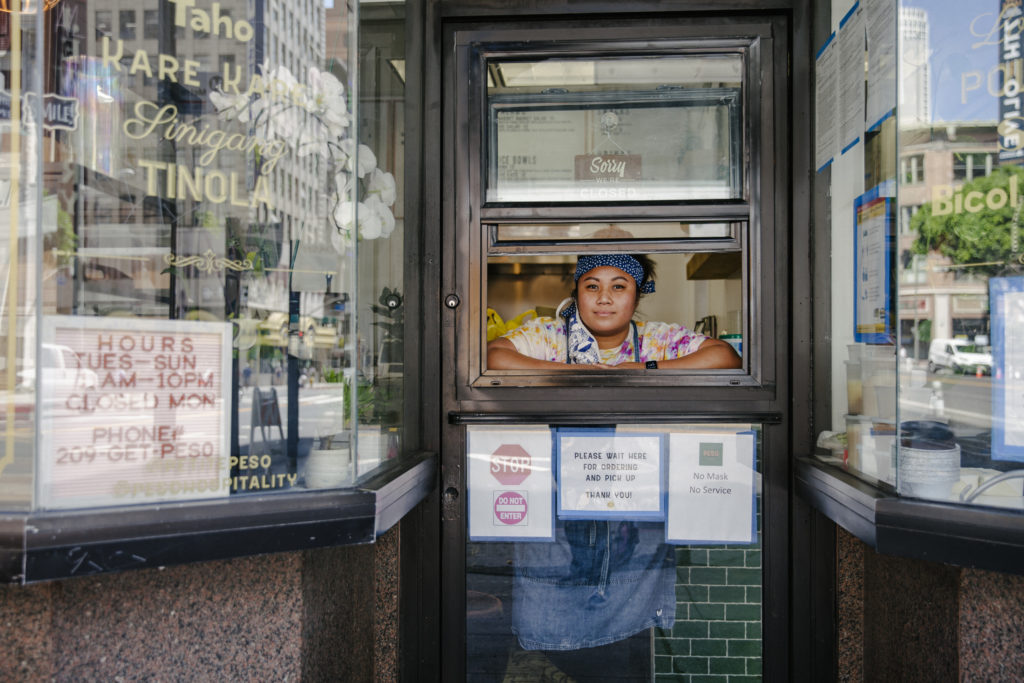
Barbosa says while some of Sqirl’s initial menu items were collaborative, she created several of its signature dishes, including the stone crab fried rice, a special that occasionally popped up on the menu. In fact, it was directly inspired by Barbosa’s childhood in Los Angeles.
“When I was young, my family would take us down to San Pedro in the summertime and eat crabs on the pier. There’s this crab dish where you take it out and you mix everything in. That idea, served back into the shell, is pretty much a dish of my youth and there’s no credit there,” Barbosa says.
A former employee who worked at Sqirl during Barbosa’s tenure but asked to remain anonymous corroborated Barbosa’s account: “People were talking about that food because Ria [Barbosa] was making that menu. Jess [Koslow] was there to add finishing touches.”
One day, Barbosa’s sous chef and then-husband, Matt Wilson, wanted a snack. As Barbosa tells it, he slathered fresh ricotta on a piece of slightly burnt toast and threw on some jam.
“At first, Koslow kind of turned her nose up at it,” Barbosa says. But after seeing how much staff loved it, she agreed to put it on the menu. “The rest is history — except the history has been changed.”
What originated as an ad hoc snack for the kitchen crew has arguably become Sqirl’s greatest hit. (Wilson confirmed the anecdote with us.)
“Sqirl was kind of like the first huge heartbreak because a lot of that was my intellectual property and things that I spent hours and days testing and trying.”
Ria Dolly Barbosa
In Koslow’s telling, the ricotta toast was inspired by blintzes she ate as a child. “My family spent a lot of time at Katella Deli, a Jewish deli in Los Alamitos,” she said in a 2016 Eater profile. “I ate a lot of blintzes, I have a big sweet tooth… That’s where it stemmed from.”
Barbosa rejects this narrative: “It didn’t come from a blintz she ate when she was little. I know because I was there when Matt created it.”
Now, in response to questions about the origin of the ricotta toast, Koslow acknowledges that the recipe was a team effort, but maintains her blintz-inspired story. A Sqirl spokesperson emailed this statement:
“Jessica wanted an adaptation of a blintz on the menu. Matt (sous chef) made the original ricotta recipe (which has since changed and evolved). Victor (a former line cook) later added the rainbow of jams. The ricotta toast dish, as a whole, was a collaborative creation by a collaborative team.”
If you want to make your own version of the ricotta toast, you’ll find the recipe in the 2016 cookbook, Everything I Want To Eat: The New California Comfort Food from L.A.’s Sqirl. The book, which contains more than 100 recipes, lists Koslow as lead author and Maria Zizka as co-author.
In the book, Koslow credits Meadow Ramsey, Sqirl’s first pastry chef, for the Daily Quiche as well as some dessert recipes. She credits Paul Everett for the Stinging Nettle Cavatelli, Patch Troffer for the Fried Sturgeon with Tartar Sauce, and Javier Ramos for the Ramos-Style Short Ribs and Vegetables in Beef Consomme.
In two additional recipe descriptions, she mentions some of Sqirl’s cooks. For example, she cites a trip Mike Lockwood took to Vietnam as inspiration for the Lait ‘n’ Egg.
To its credit, the Sqirl cookbook gives more mention of its restaurant staff than most chef-driven cookbooks, which often cite the inspiration for a dish but rarely mention any chefs de cuisine, sous chefs, or other employees who may have developed recipes.
But Barbosa’s name never appears in the cookbook, even though the book contains several recipes she says she developed. According to Barbosa, these include the Jam-Stuffed French Toast, Cured (Not Smoked) Bacon, Breakfast Sausage, and the Socca (Chickpea Flour Pancakes). Wilson isn’t mentioned in the book either, although a 2014 story in Los Angeles magazine describes both him and Barbosa as halves “of the master-level culinary mind creating the chalkboard of daily breakfast and lunch specials at Jessica’s Koslow charming neighborhood café.” (Koslow wasn’t quoted in the story.)
In response to a question about these recipes, a Sqirl spokesperson acknowledged that the Jam-Stuffed French Toast was in fact developed by Barbosa, who was inspired by the pain perdu at a former restaurant she worked at. (Barbosa has openly stated that the dish was an adaptation of a stuffed French toast she made while she was a pastry cook at Michael Mina in Las Vegas.)
The Sqirl spokesperson sent the following in an emailed statement: “As for the other four, these were recipes that Ria [Barbosa] developed at Sqirl, for Sqirl, but all four evolved before their inclusion in the cookbook, Everything I Want To Eat and have evolved further since.”
In addition to emailed statements, a Sqirl spokesperson provided us with a list of nine news articles in which Koslow credits several employees, predominantly pastry chefs, of Sqirl or Onda (the Santa Monica restaurant she co-opened with Gabriela Camara in October 2019) for their contributions to various recipes. The list also includes a link to a 2013 blog post on the Sqirl site in which Koslow thanks several of her employees for their contributions to the restaurant, which had just received four stars from LA Weekly restaurant critic Besha Rodell.
In that post, Koslow writes of Barbosa: “Like Stella Mozgawa of Warpaint she can fade into the background with a steady beat and a nuanced stride or venture out into a solo at which point you realize she’s the most magnetic part of the group. The Sunchoke Hash and Carrot Pancake are two magnificent examples.”
The list provided by Sqirl’s spokesperson also cites 57 Instagram posts in which Koslow tags specific staffers, including six in which she cites Barbosa.
But Barbosa doesn’t feel she received enough credit. She told us her breaking point came in March 2014, when Koslow was named a contender for Food & Wine‘s The People’s Best New Chef.
She remembers inquiring about the credit, saying to Koslow: “Hey… so… chef?”
To which she says Koslow responded: “Oh, it’s good for all of us.”
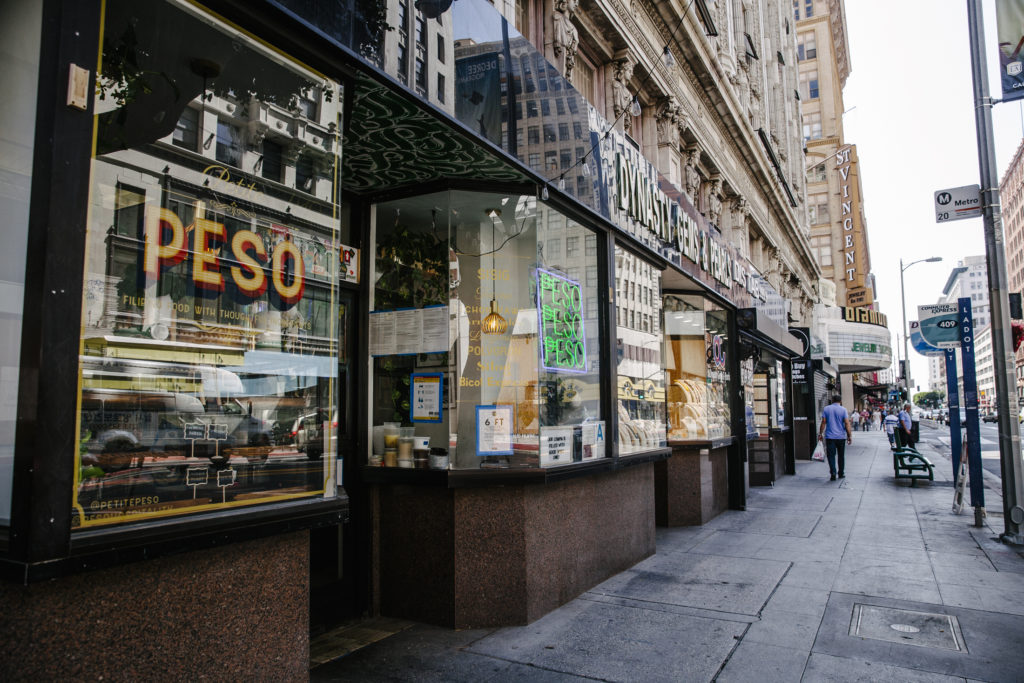
“That was the point of no return for me,” Barbosa says. “I sat in my car and cried for an hour before I went into work to prep the special we had created for the evening while she went home for the night.” Seven months later, in October 2014, she left Sqirl.
“I was tired of her taking credit for the literal blood, sweat and tears, and time I put into that kitchen,” Barbosa says.
The year Barbosa left, Koslow was dubbed a Rising Star by Star Chefs and named Chef of the Year by Eater L.A. In 2018 and in 2019, Koslow was nominated for Best Chef: West by the James Beard Awards, which are the Oscars of the food world. Earlier this year, she was nominated as Best Chef: California by the Beards.
And while most employees might celebrate the awards lavished upon their workplace, some on Sqirl’s staff found the accolades bittersweet at best and misguided at worst: Fourteen current or former employees say they’ve never seen Koslow cook in the restaurant, save for garnishing dishes while expediting items.
Adding to the perceived sting of the awards, three other current or former employees echoed Barbosa in saying that Koslow took credit where it wasn’t due.
“In no way shape or form is Jessica Koslow a chef,” says Vaca, the former bar manager. “She curates her menu and her palate, but to say that she’s a chef, that’s the most appalling title, because I’ve never seen her cook. Ever.”
In response to allegations that Koslow doesn’t cook, the Sqirl spokesperson sent a statement that reads, in part:
“Sqirl is the realization of her vision. Like nearly every other successful chef-owner, in the early days she spent a considerable amount of time cooking in the kitchen. As it gained popularity and grew, she hired talented cooks to help execute her vision and both collaborate on and develop new recipes for Sqirl.”
The former employee who worked at Sqirl during Barbosa’s tenure says that many of those talented people “ended up leaving because they didn’t feel respected or recognized.”
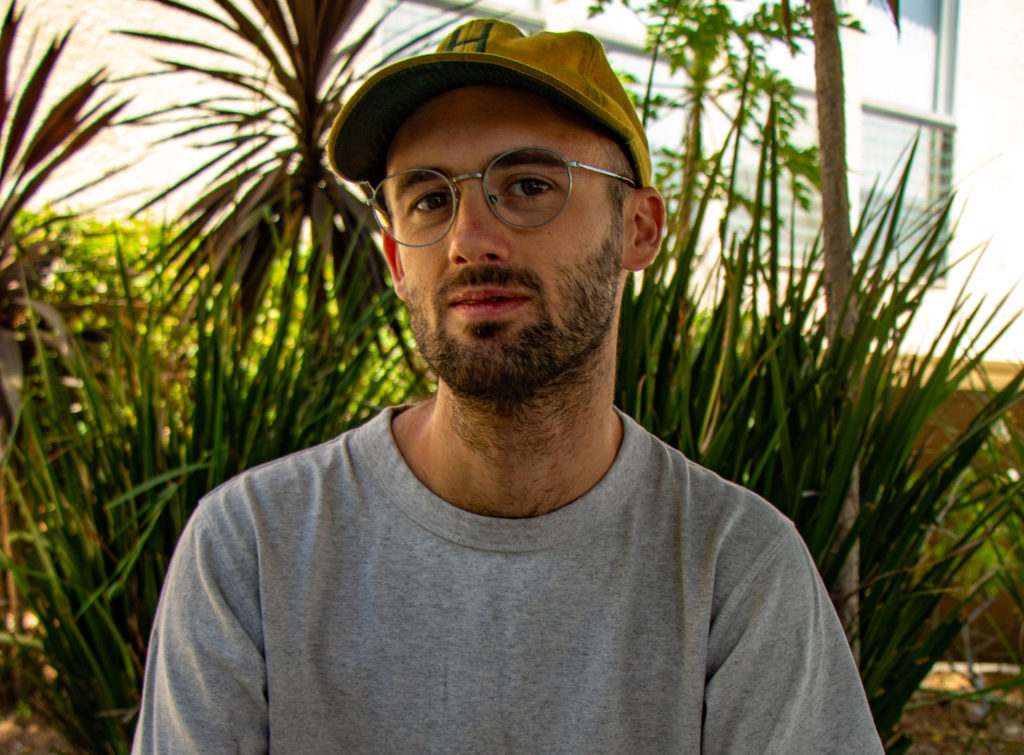
On July 11, 2018, Huber and two co-workers were finishing up lunch when an inspector from the L.A. County Department of Public Health showed up. The visit was a surprise. Huber told us Sqirl had recently received an “A” rating from the department.
At the time, Huber was in the breakroom, located one door south of the restaurant, in the space now known as Sqirl Away, which offers grab-and-go soups and salads as well as pantry items like olive oil and, of course, jam. But back then, the approximately 1,600-square-foot space was subdivided into a break and storage area in the front, and a kitchen in the back — one where ten current and former employees say they’d hid from health inspectors on more than one occasion.
As Huber rushed to close the door to the secondary kitchen, Elise Fields, a pastry chef at the time, locked herself and a coworker inside, but not before the health inspector caught a glimpse of the space.
L.A. County Department of Public Health records show that when the inspector tried to enter the kitchen in question, the door was locked.
“It was very small. There were no windows, no ventilation, lots of mold,” Fields says, referring to the space where she says she spent about 90 percent of her time during her one- and-a-half years at Sqirl. “Everything about it was just disgusting.”
The kitchen, which was behind a locked door, had two induction burners, a convection oven for the pastry team, and a sink that at times lacked hot water, according to Fields. “I recall having to boil water to wash dishes on more than one occasion,” she says.
Sasha Piligian, a former pastry chef, says she never felt safe working in that kitchen. “The whole time I worked there, I was working with no ventilation. There was no hood system,” she says. “Everything we were making, it always had a certain odor.”
By contrast, Sqirl’s 800-square-foot main kitchen, located in the restaurant next door, was regularly inspected by health department officials and typically received an ‘A’ rating.
Fields says she and a co-worker killed the lights and hid for an hour inside the kitchen while a manager on the other side of the door played dumb and told the inspector they didn’t have the keys.
Piligian, Huber, Vaca, and a former employee who wished to remain anonymous say this was a common routine. They say managers were told that if anyone from the health department asked about the space, they should say they didn’t have a key.
Eventually, Koslow, who wasn’t there, got on the phone with the inspector and set up a meeting to explain herself and discuss plans to bring the space up to code. After nearly an hour, the health inspector left, agreeing to come back the next day. Eventually, according to a former cook who worked in that kitchen regularly and asked to remain anonymous, “[I] knocked on the door and told the people in the kitchen that it was safe to come out.”
Health department inspection records from that day say: “Complaint investigation regarding the illegal preparation of food from the property located at 720 N. Virgil Ave #4 revealed a locked door leading to an alleged illegal kitchen along with cockroaches, collapsing roof and unsanitary conditions.”
The next day, a chief with the L.A. County Department of Public Health and an inspector conducted a joint follow-up investigation, according to health department records.
“We had to remove all cooking equipment. The induction burners, dishes, pots and pans, bins of flour,” says the former cook. “We scrubbed the floors and walls. We unplugged the oven and tried to remove it from the kitchen (while it was still hot) but it wouldn’t fit through the door. So we left it unplugged in the corner and were told to say it doesn’t work, we don’t use it and it’s only here for storage.”
Although Fields only had to hide in the kitchen once, she says that during her employment at Sqirl, from 2018 to 2019, all of the pastry menu items were produced out of this secondary, unpermitted kitchen. When inspectors showed up, she says, employees would shut the door to the back area.
Piligian, the former pastry chef, says that lying to inspectors “was just a way of life” at Sqirl.
Covering up minor violations, like hiding used towels, is not unheard of in the restaurant industry. The regulations are often so numerous and specific that few restaurants can adhere to all of them. But with the exception of Fonseca, nearly all of the former and current Sqirl employees interviewed for this story say they’d never been required by previous employers to work in a poorly ventilated, unpermitted kitchen. (Fonseca also said he previously worked at restaurants that hid refrigerators and grills from the health department.)
In an email to the staff following the inspection, Koslow wrote:
“As you all may know, yesterday the health department… arrived after receiving an ‘anonymous tip’ with very specific key notes about the Sqirl Away Kitchen. [The floor manager at the time] masterfully worked to keep [the inspector] out of the kitchen and an appointment was set up for 9am today for me to go to the health department and connect with the Chief and Senior Officer regarding the Sqirl Away space.”
“It was totally not up to code. It was horrendous. The back area had no ventilation”
Jacqueline Vaca
The anonymous tip had come from Vaca, the former bar manager. “It was totally not up to code. It was horrendous. The back area had no ventilation,” she says. “I did it for my pastry chef friends. Some of them had lung issues because they were breathing in flour particles.”
Koslow addressed the unpermitted kitchen in her July 13 statement to the media. Citing a lack of funds to build a proper, permitted second kitchen coupled with health department’s lack of thoroughness, she wrote: “The truth is that at the time I thought I could update the additional space with the little funds I had saved.”
The statement doesn’t mention the alleged practice of dodging or lying to the health department. Instead, it reads: “Around that time, our secondary kitchen fell off the radar of the Health Department, despite the fact that Sqirl’s main kitchen received regular inspections. Ashamedly, I took advantage of their oversight…”
After the surprise health inspection, Koslow worked with the L.A. County Department of Public Health to bring the space up to code. But as construction began, transforming the private break room and kitchen into the now public-facing Sqirl Away, eight sources say the unsafe working conditions remained.
“The entire time we were expected to maneuver [past] large holes in the ground in the direct path to the walk-in [refrigerator],” Huber, the former Sqirl cook, said via email. “It’s shocking that nobody broke an ankle tripping in one.”
On October 19, 2019, while construction was still underway, Koslow received an alarming series of text messages from a manager at the time, according to a group text message we obtained.
“The construction crew used a very toxic sealant next door. We have both doors open, no one alerted us before they did,” the manager texted Koslow and a group of Sqirl managers at 1:46 p.m.
The smell was so strong, according to the texts, that guests were complaining. In the texts, the manager says that the chef de cuisine suggested the restaurant close for the day.
“They are working and we asked them to stop but they’d like to continue because they are almost done,” the manager texted Koslow. The smell became so pungent, the chef de cuisine told staff members to avoid the walk-in fridge, where the fumes were gathering.
“Let me call you in 2,” Koslow texted back.
“It’s very bad, we’re all light headed. We need a lot of stuff – eggs, radish, ricotta – not sure how to proceed,” the manager replied via text.
Employees say Koslow sent her husband, Ryan Erlich, a Los Angeles County Deputy District Attorney, to Sqirl to set up fans to help ventilate the space. The restaurant remained open until 4 p.m., its standard closing time.
In response to a question about the fumes, a Sqirl spokesperson sent the following: “During the renovation, the construction crew took significant steps to ensure that all Sqirl employees and customers were safe. And we always took steps on our end to ensure that staying open was the right and safe thing. In this specific instance, the contractor assured us that nothing toxic was being sprayed. We were able to get the fumes to dissipate in minutes through the use of industrial strength fans and hoods. To be clear, we would have closed if there was even a hint of danger.”
“She’s an imperfect boss and she has imperfect ways of dealing with things just like any other human being on this earth.”
Arlan Meacher
Fonseca, former food runner Arlan Meacher, and an employee who asked to remain anonymous, believe some of the allegations against Koslow have been blown out of proportion. They say they never felt physically unsafe working at Sqirl, even during the construction.
“What’s unfortunate about this is because there are a lot of things here and there that have kernels of truth, anyone reading into this at this moment must think that with that much smoke, there’s obviously fire,” Meacher says. “She’s an imperfect boss and she has imperfect ways of dealing with things just like any other human being on this earth.”
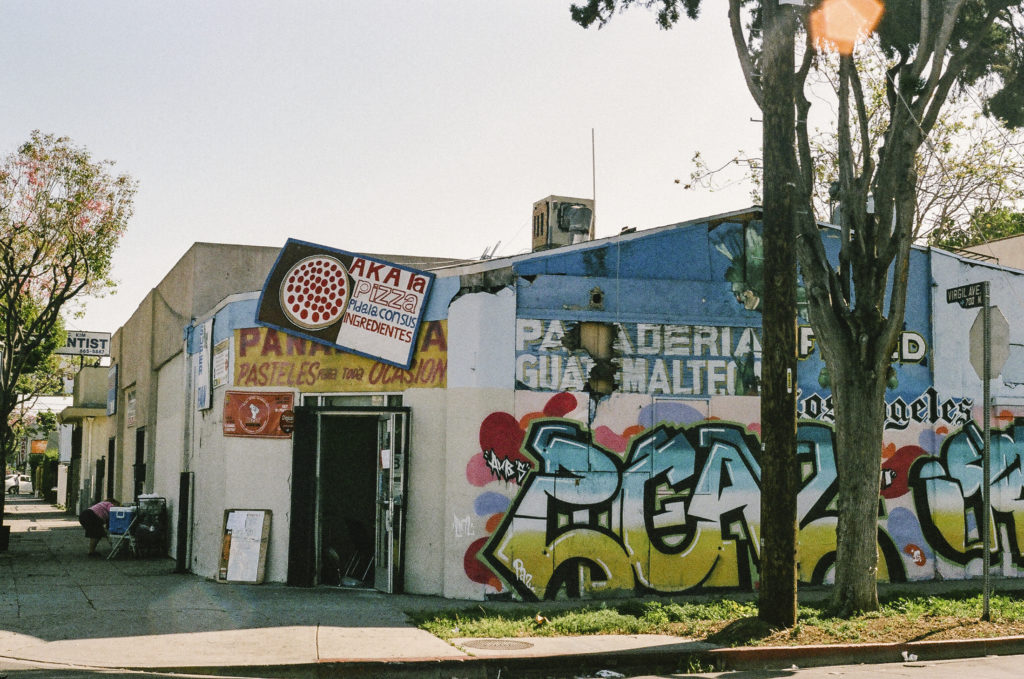
Over the weekend of July 12, 2020, photos of jam buckets covered in mold began circulating on social media, drawing a horrified reaction from many Sqirl fans and customers.
Nine former and current Sqirl employees, some of whom were interviewed months before the now infamous photos surfaced online, said they encountered moldy jams while working there.
According to former pastry chef Piligian, the mold on jams “was sort of a running joke.” Seven other current or former Sqirl employees also say Koslow told them to scrape off the layer of mold and serve the untainted part to customers, which they did.
On a busy day during the middle of service in early 2020, Huber told us, he went to retrieve a fresh bucket of jam from the walk-in refrigerator. He says most of the jam had mold on it, so he grabbed a fresh bucket. Huber says he returned to the restaurant and when he went to place the fresh jam in a small reach-in refrigerator, Koslow approached him and told him to swap it for an older jam bucket.
Huber says moldy jam was a persistent problem. It “would take way too much labor” to clean up all the mold and “there was never enough time to do that,” he says.
Currently, Sqirl’s jams — all 35,000 jars of it a year, according to Koslow’s interview on Chang’s podcast — are made by the night crew. This is a team of approximately ten employees, most of them Latino, who typically work from 5 p.m. until 2 or 3:30 a.m. at Sqirl’s “catering kitchen” a half mile away from the restaurant, on Vermont Avenue.
On July 12, shortly after Sqirl was called out on social media for the moldy jam, Koslow issued a statement in which she defended the practice of scraping mold off jam. In that statement, she says: “With this bulk jam, over time, mold would sometimes develop on the surface that we handled with the guidance of preservation mentors and experts like Dr. Patrick Hickey, by discarding mold and several inches below the mold, or by discarding containers altogether.”
Hickey, a mycologist who lives in Edinburgh, Scotland, told the Washington Post he had never met or spoken to Koslow. He also said that in a commercial operation, scraping mold off jam is a bad idea because there’s no way of knowing how much of the jam has been contaminated. “There‘s a danger that the toxins could build up in that jam and diffuse down deeper,” Hickey told the newspaper.
We spoke to four jam-makers and preservers, nearly all of whom asked to remain anonymous to protect their careers. They all told us the practice of scraping mold from jam then selling it or serving it in a commercial setting, such as a restaurant, is unacceptable. “[Mold] is supposed to be a thing that signals something is wrong,” said Rose Lawrence, an award winning master preserver and baker.
In her July 12 statement, Koslow said the lack of preservatives was to blame for the mold. “We don’t use commercial pectin, sweeteners or other stabilizers, and to highlight the fruit, we add [a] little sugar… And put simply, a low-sugar jam is more susceptible to the growth of mold. The same types of mold that develop on some cheese, charcuterie, dry aged beef, and lots of other preserved foods.”
But that explanation doesn’t sit right with Stephen Wade, who was in L.A. County’s first Master Food Preserver cohort (the county cancelled the program in 2015). In a lengthy Twitter thread responding to some of Koslow’s recent public statements, he said the notion that these two types of mold are the same is “simply not fundamentally true. The types of molds found on/in cheeses, meats, other preserved foods is fundamentally untrue. the different structural character of those products, the molds… in question are of different classes. most of those in cheese or dry aged meats are benign, or removed before consumption (dry aging) most of those products are firm with little hydrolysis; fruits and jams are fundamentally different in that way (as with mold on fresh cheeses.)”
The U.S. Department of Agriculture is clear about its stance on mold and jam: On its website, the agency says that when it comes to jams and jellies, “Microbiologists recommend against scooping out the mold and using the remaining condiment.”
A statement emailed to us by a Sqirl spokesperson responding to allegations of moldy jam reads, in part: “We have already thrown out any jam with mold on it and will continue to do so moving forward. Jam with mold will not be permitted in any of our kitchens or our restaurant.”
It continued: “We are also submitting samples of our jam to an independent lab, Certified Laboratories, Inc., for testing to ensure its safety and longevity.”

The restaurant industry was wobbly prior to the pandemic. But after COVID-19 hit, it signaled an awakening that exposed its chronic instability and left workers to fend for themselves as business owners struggled to stay afloat. During this time of immense change, people demanded accountability, but oftentimes got what they perceived to be feigned solidarity.
After March 15, when Los Angeles Mayor Eric Garcetti ordered all restaurants in the city to stop dine-in service, Sqirl moved to takeout and eventually delivery.
Several Sqirl employees, citing limited guidance about physical distancing and a lack of communication regarding public health orders, say they felt unsafe coming into work.
One current employee, who asked to remain unnamed out of concern about repercussions, says Koslow made decisions about safety protocols, such as continuing to allow customers inside, without consulting the staff. “It didn’t feel like Jess tried to make things better for employees in terms of safety,” this person told us.
Another current employee, who also spoke on the condition of anonymity, said the restaurant constantly exceeded capacity when too many customers stopped by at once to pick up take-out orders, causing her to have a panic attack.
Paired with the personal safety worries, there were also major concerns about continued employment and pay — issues felt throughout many industries as the pandemic spread.
Former Sqirl pastry cook Gelyn Montanino took a week of paid sick leave on March 16th, and says she was furloughed immediately afterward. Montanino, worried about her co-workers, especially the ones who didn’t qualify for unemployment, worked with Huber to create a GoFundMe campaign to help their fellow employees. Inspired by the fundraising efforts of other prominent chefs, they thought that with Sqirl’s celebrity endorsements and large Instagram following, they would hit their $50,000 goal — which would have netted each employee about $1,300.
“At first, [Jessica] was on board,” Montanino says. But before the campaign launched, Koslow told Montanino she couldn’t use the Sqirl name.
In emails shared with us, Koslow tells Montanino she’s “very uncomfortable personally and legally with a GoFundMe campaign with Sqirl’s name attached to it.” One former Sqirl employee told us Koslow asked them not to mention the campaign on their personal social media channels.
Ultimately, Koslow raised funds for employees with a t-shirt sale and a GiveSmart auction from which Sqirl employees say they received two checks: one for $112.55 and one for $279.12. A Sqirl spokesperson points out that Koslow also paid for 100 percent of workers’ health care benefits through June, opting to furlough them rather than lay them off in order to preserve their healthcare benefits.
Meanwhile, Montanino and Huber launched their own fundraiser on March 27 without Koslow’s endorsement. Although the unassumingly named Staff Relief Fund never mentions Sqirl, it features a picture of a squirrel and refers to “LA’s iconic Virgil Village daytime cafe and retail jam operation.” The fundraiser has, so far, brought in $5,644.
As the pandemic continued and the economy tanked, more than 17 employees crafted a petition asking Koslow to support the worker-created GoFundMe campaign and provide hazard pay and full wages for staff who didn’t qualify for unemployment benefits. (It was leaked to Koslow before they got a chance to present it to her, they say.)
The petition read in part: “We are proud to be the backbone of Sqirl. Our hard work and dedication is what makes that clout and financial success possible. This pandemic has been an unprecedented shock to every single one of us, but despite the uncertainty we will come back strong.”
On March 30, seven of Sqirl’s managers, concerned about their employees’ safety, held a meeting with Koslow. They gave her an ultimatum: Temporarily close the restaurant and establish clear safety protocols or they’d walk out.
The following day, Sqirl announced its last day of take-out and delivery service would be Friday, April 3.
On April 3, Sqirl announced it would be transforming into a relief kitchen so it could provide free meals to restaurant and service industry workers via the Restaurant Workers Relief Program, which was funded by the LEE Initiative. Several employees say they were dismayed to learn about the decision not from Koslow herself, but from her social media.
“There was no communication. That was the theme the entire time with COVID. We found out about things through Instagram,” says Montanino.
Koslow downsized the staff by furloughing or laying off more than 30 employees, a majority of her staff, starting April 4.
In late April, Sqirl received a PPP loan of between $325,000 and $1 million, according to recently released data from the U.S. Small Business Administration. Koslow used the loan to rehire most of her staff.
On June 4, as demonstrations against police brutality and racism sprung up around Los Angeles — and the world — following the killing of George Floyd by a Minneapolis police officer, Koslow made an announcement on Instagram. She would, each quarter, donate 1 percent of Sqirl’s gross restaurant sales to organizations “addressing racism directed at the Black community.” Her post read, in part:
“It’s up to each of us to eliminate bigotry, hate and intolerance in our society. This is a lifelong, holistic and multigenerational fight and we’re committed to it, personally and collectively. We continue to support every person — here and around the country — who has stood up and marched, and risked their personal safety to bring change to our communities. We also join those who have committed to do the hard personal work to force change in ourselves.”
“I just thought the poor response to the Black Lives Matter movement was so tone deaf and so self-aggrandizing and repugnant that I found a need to de-align myself from Sqirl,”
Gabe Rios
But the Instagram post did not inspire the kind of reaction that Koslow had likely intended. Instead, comments ranged from mocking Sqirl for donating just 1 percent of its proceeds, and pointing out the restaurant’s lack of Black employees as well as its role in gentrifying Virgil Village.
Former sous chef Rios left the restaurant and began looking for other jobs shortly after the Instagram post was published. “I just thought the poor response to the Black Lives Matter movement was so tone deaf and so self-aggrandizing and repugnant that I found a need to de-align myself from Sqirl,” he says. “I found it feckless and irresponsible to have the platform that Sqirl has and not speak out in any tangible way about police brutality.”
Huber had a similar reaction, calling it “sanctimonious virtue signaling,” especially considering Koslow’s relationship to Virgil Village.
The Instagram post has since been deleted. When asked why, a Sqirl spokesperson said “the comments section became a breeding ground for hateful and spiteful comments.”
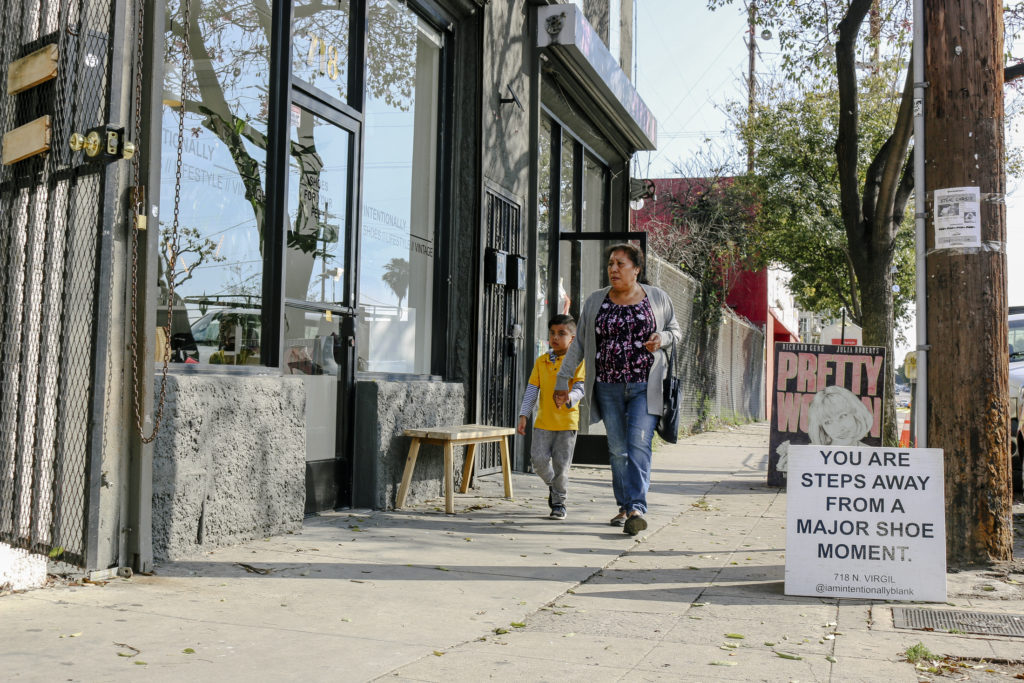
The fallout from Sqirl’s public relations crisis has been swift. Sustainable spice company Diaspora Co. ended its collaboration, which had begun less than a week before #moldgate erupted on Twitter. Founder Sana Javeri Kadri told Eater San Francisco that she had “received immediate pushback from a couple of longtime customers as soon as she announced the collaboration.”
On Instagram, Kadri said she had agreed to co-release a hibiscus and rhubarb jam because she thought it would be a good way “to spotlight BIPOC farmers” and “honor these special crops.” Now, she says she regrets it because, “The collab gave Sqirl another trendy marketing boost that was in direct opposition to what its own workers are fighting for: BIPOC equity and ownership (of recipes and more) at Sqirl and in protest of unsafe working conditions.”
Not all of Koslow’s business projects have been cancelled or put on hold: New York publisher ABRAMS Books this week released Koslow’s new jam cookbook, which is billed as “a cookbook that looks and feels like no other preserving book out there.”
But multiple employees say morale at Sqirl is at an all-time low. “Had Jessica just taken us seriously, maybe none of this would have happened,” Huber says. After being furloughed in April, Huber was offered a chance to come back to work in May. However, because of his severe asthma, he declined the offer and was furloughed until July 15, when he was officially let go.
Rios hopes the fiasco at Sqirl will serve as a learning experience — or at least a cautionary tale, to others in the industry. “I hope it’s a parable for other leading industry members to see they have platforms and see how those platforms can be used to raise up the voices of those that haven’t been heard,” he says. “To raise up the voices of community members that are antithetical to the kind of patronage that a business tries to cultivate and frankly just hearing your employees.”
And while some former employees say the reckoning is long overdue, it’s not too late for the restaurant to make meaningful reforms. “I think the only thing that can save Sqirl is transparency and accountability and deep change,” Vaca says. “That would require Jess to take a hard look at herself, and I don’t know if she’s ready to do that.”
Correction: A previous version of this story misstated that employees approached Koslow with the petition. According to a Sqirl spokesperson, “They prepared a petition, Jessica heard that it was in the works from staff, but it was never presented to her in any form.”
It also stated that Koslow was not present the day the mural was painted; A Sqirl spokesperson said she was, in fact, present that day.
Additionally, she was named a contender for The People’s Best New Chef by Food & Wine; there was not a nomination process.